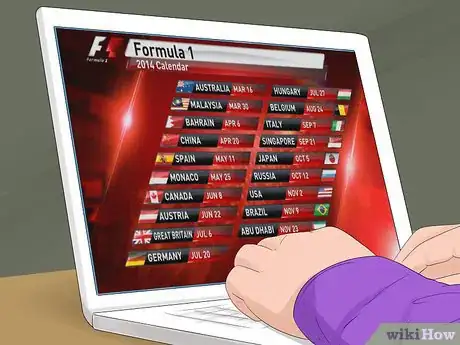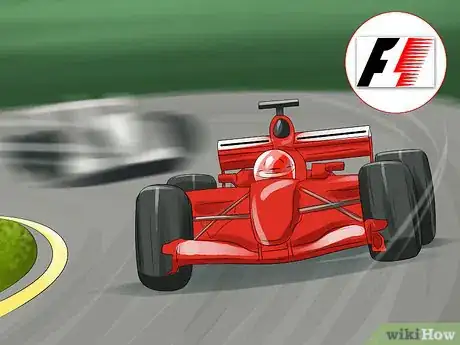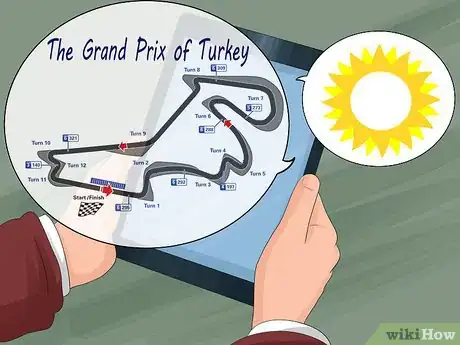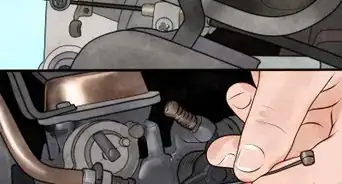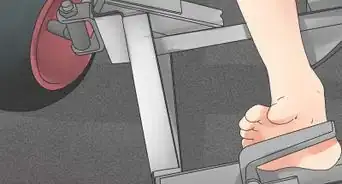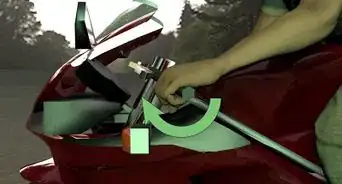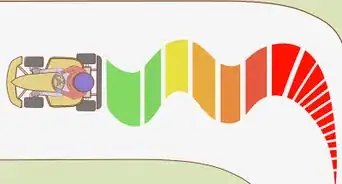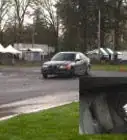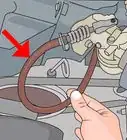wikiHow is a “wiki,” similar to Wikipedia, which means that many of our articles are co-written by multiple authors. To create this article, 12 people, some anonymous, worked to edit and improve it over time.
This article has been viewed 34,755 times.
Learn more...
Automobile racing is popular throughout most of the world in various forms. The highest form of automobile racing is Formula 1. The cars used in Formula 1 are the most technically advanced racing cars in the world. Drivers must excel in at least 2 lower classes of racing to reach the seat of a Formula 1 car. The amount of money involved in the Formula 1 effort exceeds other types of races. Formula 1 teams will spend up to $1 million USD per engine, and go through several engines a year. Formula 1 drivers are on retainer for up to $20 million USD per season. Sponsorship money flows into Formula 1 at rates of more than $100 million. Races are held in countries all over the world, encompassing 6 continents. Each country hosts only 1 race. At the completion of the season, the driver and team that have amassed the most combined points in the international races win the world championships for the year. Use these tips to learn how to buy tickets to Formula 1.
Steps
Choose A Race
-
1Consult the Formula 1 race calendar. This calendar of events is available on the official Internet site of Formula 1. The official Formula 1 Internet site also lists the scheduled times for the Friday free practice sessions, the Saturday free practice and race qualifying sessions, and the Sunday race. There is some variation in race venues from year to year, so be sure to use the current race calendar.
-
2Pick an early season race or a late season race. The early season races will be more open to all competitors; while in the later races, the competition will increasingly focus on those who still have a chance to be world champion.Advertisement
-
3Study the tracks. The official Formula 1 Internet calendar will offer track maps for all events. These are not standard ovals, but rather complex courses with turns of varying difficulty and straights of varying lengths. Choose a slower, twisty track or a wide, high-speed track with long straights.
-
4Check the weather. Be aware that the typical weather expectations for each race venue will differ. For example, it may be hot at the Turkish Grand Prix and rainy at the Belgian Grand Prix.
-
5Determine needed travel documentation and expectations. The need for passports and visas will vary from country to country, and advice from the appropriate embassy or national travel office should be obtained. Determine any other restrictions that may apply. For example, alcohol is illegal in Muslim countries.
Purchase Your Tickets
-
1Choose a seating area. Spectator seating areas will be placed strategically in areas of interest around the track. Most will have large screen televisions facing the seating area so that action on other portions of the track can be followed. Grandstand locations and television screen locations will be shown on the track map.
- Decide to sit in a grandstand seat. The grandstands are named to identify the specific seat location. Each venue will specify if seating is open for free practices. For most races, grandstand ticket holders must take their assigned seats.
- Get in closer to the action. Each venue has an area called the Formula 1 Paddock Club. The Paddock Club is on the second floor of the building that houses the racing team pits. From the Paddock Club, you can look down at the action in the pits or watch the entire race from an open balcony. Food and drink is included for the entire day.
- Tour the pits. Formula 1 has no such thing as a pit pass that allows free entry to the pits. Paddock Club attendees are typically offered short escorted pit walk tours at pre-arranged times.
-
2Pick the days you wish to attend. Tickets to a Grand Prix race are available as a package for all 3 days, but less expensive packages are available if you do not wish to attend all 3 days of the event.
-
3Buy your tickets. Tickets are available directly through the racing association that operates the track or by tour operators. The official Formula 1 Internet site offers such tours, as do other specialty on line tour operators. The tours operators usually offer hotel deals and transportation between the hotel and the track. The price of the event ranges, but typically starts at $1,000 USD (800 Euros) per day per seat.
